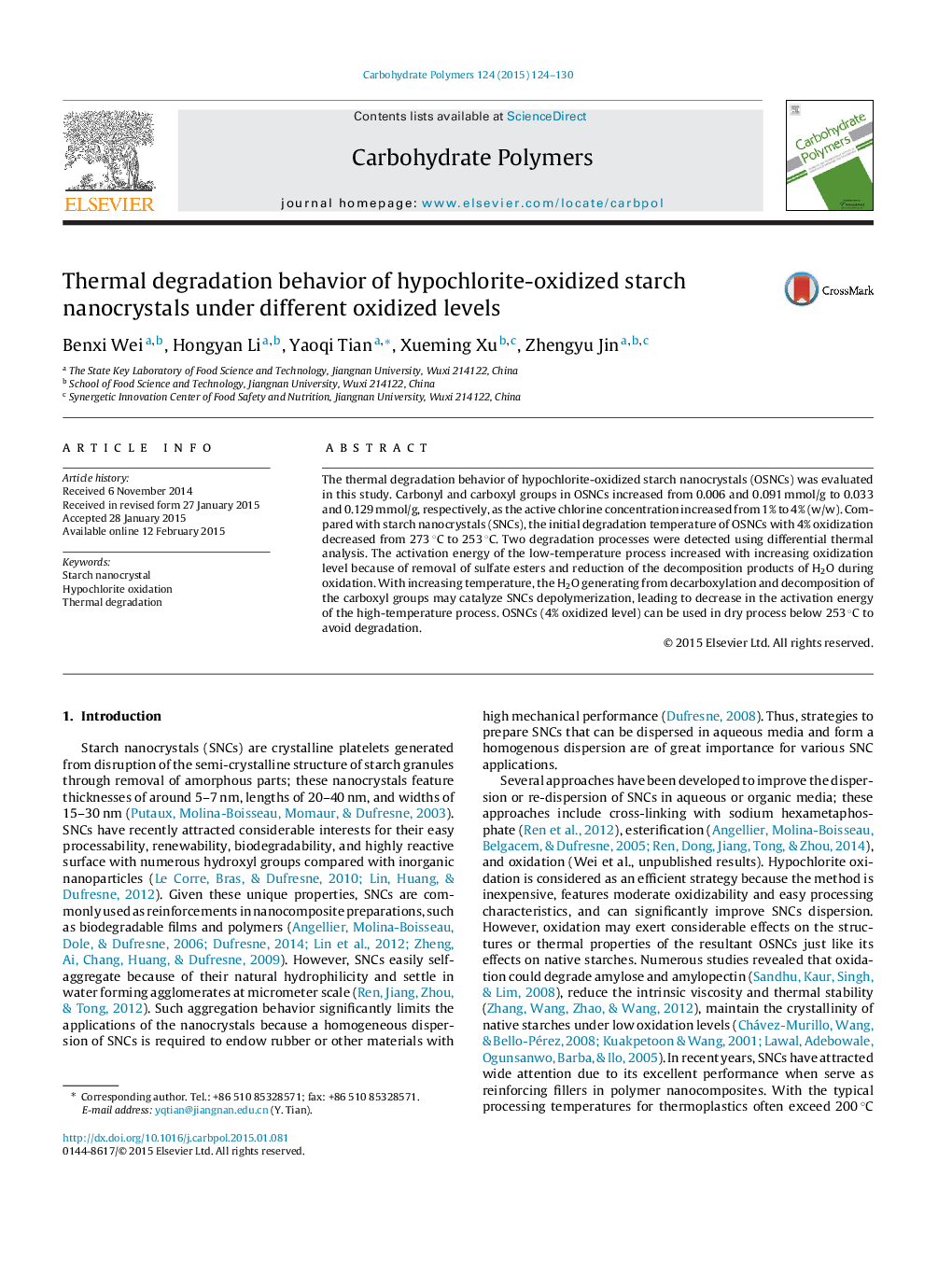| Article ID | Journal | Published Year | Pages | File Type |
|---|---|---|---|---|
| 7788838 | Carbohydrate Polymers | 2015 | 7 Pages |
Abstract
The thermal degradation behavior of hypochlorite-oxidized starch nanocrystals (OSNCs) was evaluated in this study. Carbonyl and carboxyl groups in OSNCs increased from 0.006 and 0.091 mmol/g to 0.033 and 0.129 mmol/g, respectively, as the active chlorine concentration increased from 1% to 4% (w/w). Compared with starch nanocrystals (SNCs), the initial degradation temperature of OSNCs with 4% oxidization decreased from 273 °C to 253 °C. Two degradation processes were detected using differential thermal analysis. The activation energy of the low-temperature process increased with increasing oxidization level because of removal of sulfate esters and reduction of the decomposition products of H2O during oxidation. With increasing temperature, the H2O generating from decarboxylation and decomposition of the carboxyl groups may catalyze SNCs depolymerization, leading to decrease in the activation energy of the high-temperature process. OSNCs (4% oxidized level) can be used in dry process below 253 °C to avoid degradation.
Related Topics
Physical Sciences and Engineering
Chemistry
Organic Chemistry
Authors
Benxi Wei, Hongyan Li, Yaoqi Tian, Xueming Xu, Zhengyu Jin,
